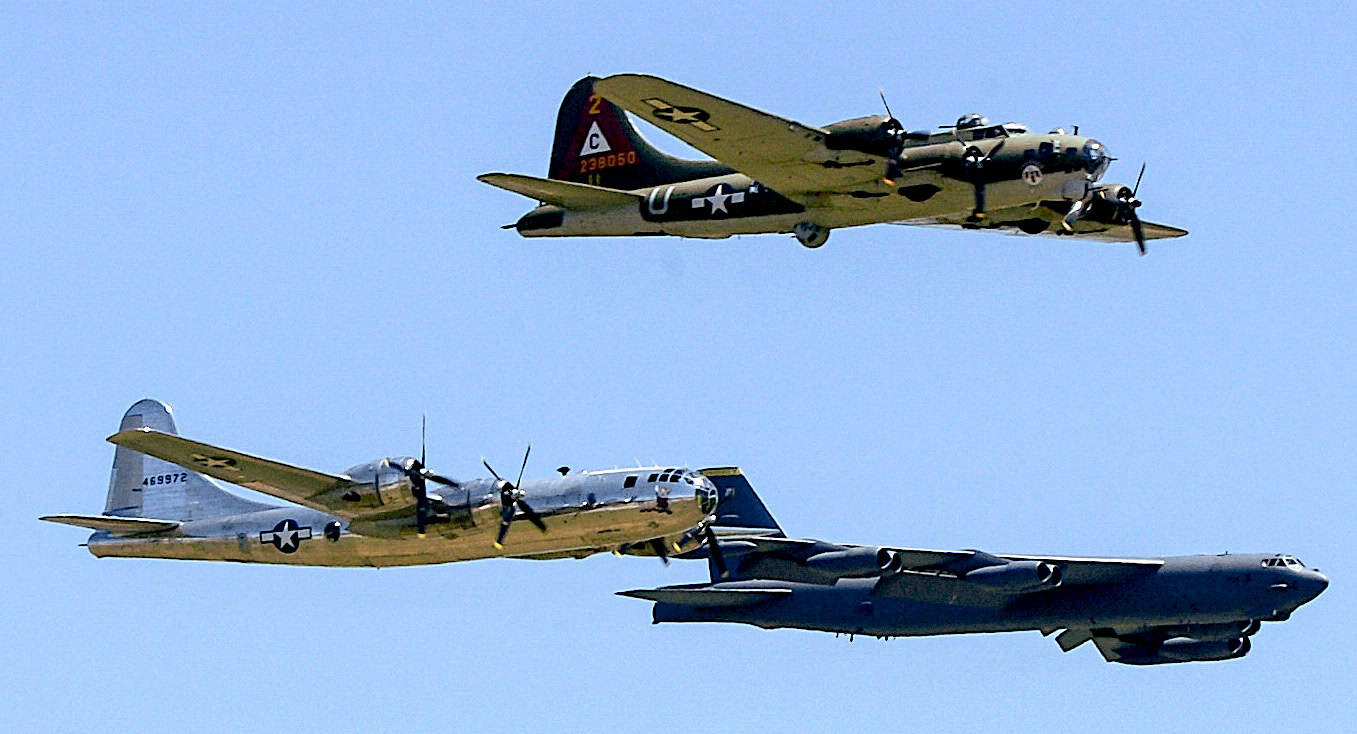World War II was an excellent time for airplane engineering. During the war, the U.S. produced over 300,000 aircraft, and many of those aircraft are still in commission today! WWII was also the first war where aviation was established as a critical combat component for controlling and advancing space.
The importance of planes in the war was established early on when a single skilled pilot could control entire swaths of airspace. However, as the war raged and the tactical situation changed for formation fighting, the skill of individual pilots waned and it became more about what aircraft they were flying and flying alongside.
This period also established the streamlined cantilever monoplane as the dominant aircraft construction over the traditional biplanes of the past. Key design features of the era included stressed-skin semi-monocoque construction, clean, untraced cantilever wings, landing flaps, and fully enclosed cockpits.
To determine what belonged on this list, we looked at the planes most influential in their specific roles and for specific countries. We did not discriminate based on plane manufacturer or designer. So, in other words, we didn’t make an effort to choose only “good guy” planes. Once we had determined which planes belonged on the list in the first place, we began researching the planes. Much literature about WWII-era airplanes is hardcover printed, rather than digitally archived. While there is a movement to digitally archive more data, we still had to rely on several print sources, which we cited inline. However, accessing these sources to read them in their entirety may be prohibitive for some users.
Ilyushin Il-2
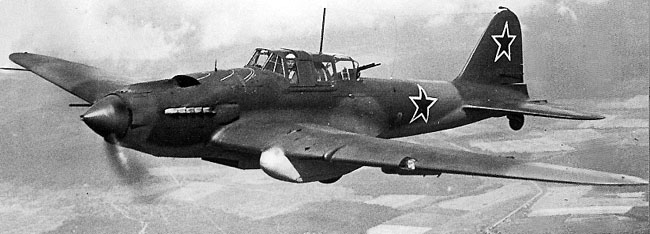
The Ilyushin Il-2 is often referred to as “Stalin’s essential aircraft”. This name comes from its usage by the Soviet Union during WWII being so immense. It is the most-produced aircraft of the WWII era and the second most-produced aircraft of all time, exceeded only by the Cessna 172. The Il-2 was a crucial fixture in driving back the Nazi invasion of the Soviet Union. The Soviet army had not predicted that the Nazis were going to invade them when they did, and, at the time, the Soviet Air Force was undergoing a huge modernization effort that included a slow introduction of new aircraft, like the Il-2. However, once the SS invaded, the Soviets quickly needed more and more Il-2 planes.
The Ilyushin Il-2 dates back to the 1930s when Soviet military specialists determined that the Red Army needed an aircraft with dedicated dive-bombing capabilities as well as the ability to independently attack and disable enemy forces, including tanks and other armored vehicles. Thus, Sergei Ilyushin pitched the Il-2 as a concept for a “flying tank” in 1938.
However, by the time Germany invaded the Soviet Union, only 249 Il-2s were produced and only 70 were in service. Il-2 pilots had only the minimum training needed to operate the planes. Despite that, the Il-2 became the most influential factor in driving back the Nazi invasion. Stalin eventually wrote to the plants producing Il-2s personally, demanding that they ramp up production because “Our Red Army needs Il-2 aircraft like the air it breathes, like the bread it eats.” German soldiers often called the Il-2 a “Betonflugzeug” or “Concrete Plane”. The name comes from the forward fuselage section was made entirely of armor plate. The armor makes it virtually impossible to shoot down with a machine gun or 20 mm cannon.
Junkers Ju-87 “Stuka”
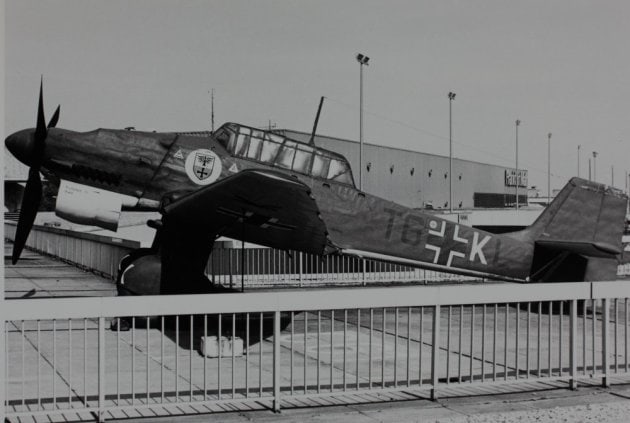
By the time WWII started, the Junkers Ju-87, also known as the “Stuka”, was already considered “obsolete, vulnerable, and technologically basic”. Despite these cutting descriptions, the plane was used by the Luftwaffe for the entirety of WWII. Typically speaking, a country’s Air Force will begin researching a new generation of aircraft the moment they put the current generation into service. Aircraft essentially become obsolete the second they hit the skies as far as the Air Force is concerned.
However, German engineers could not create a suitable replacement for the Ju-87 during the war. The Luftwaffe called it the “little bomber”. It was a Ju-87 that dropped the first bomb of World War II on September 1, 1939. It also flew the last Luftwaffe ground assault mission on May 4, 1945. The Ju-87 was so prolific amongst the German military and people that the very last propaganda film produced by the Luftwaffe shows Ju-87s attacking Soviet tanks on the outskirts of Berlin.
One of the primary features that made the Ju-87 so prolific for the German military is one of the things critics claimed against it: its technological simplicity. It was extremely easy to manufacture, repair, and maintain because there weren’t as many moving parts. Additionally, since the Ju-87 had been in commission before the war started, many mechanics already knew how to handle on without additional training. Thus, the plane saw 5 ½ years of near non-stop combat despite being considered “primitive, slow, and vulnerable” before the war had even begun.
Despite its overwhelming simplicity (and hideous appearance), the Ju-87 was extremely pragmatic. It was the first plane able to dive 90 degrees vertically. Additionally, it had exceptional accuracy, with even bad drops typically landing within 100 feet of the target.
North American P-51D Mustang
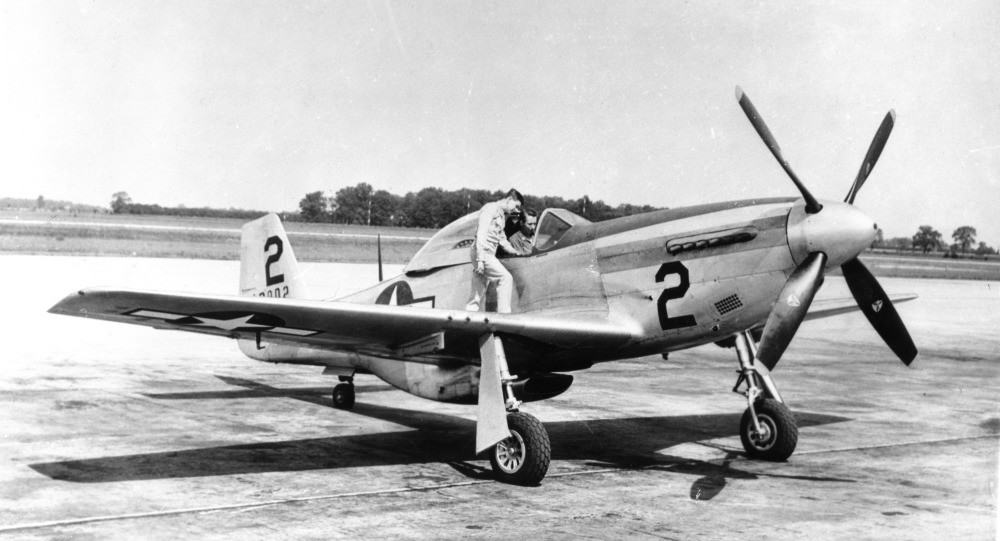
North American planes played a big role in WWII as well. One such exceptional airplane was the P-51D Mustang, manufactured in North America for the British Royal Air Force. It was a single-seat, single-engine aircraft produced by North American Aviation. The P-51 is widely regarded as the finest all-around piston-engined fighter aircraft of the WWII era to be significantly produced. The plane’s design originated as a proposal to a 1940 British Aircraft Purchasing Commission by the Chief Designer of North American Aviation, J.H. “Dutch” Kindelberger. Kindelberger’s goal was to design a fighter aircraft from scratch instead of producing another fighter—namely the Curtiss P-40—under license.
At the time, the U.S. War Department had reserved turbo-supercharger engine production for four-engined bomber planes and the P-38 Lightning specifically. So, fighter aircraft made in America were held back by the lack of powerful engines. These non-turbo-supercharger aircraft—namely the P-40 and P-39 which used non-turbo-supercharged Allison engines—showed mediocre performance compared to other planes at the time. However, Kindelberger used experimental data from the U.S. National Advisory Committee on Aviation to achieve a massive leap in non-turbo-supercharged plane performance as he designed the P-51D.
It ran at a max speed of 390 miles per hour (630 kmph). Additionally, it had a combat range of 750 miles (1,200 km). Using an external drop tank nearly doubled its operational range to 1375 miles (2,200 km). The RAF also experimented with outfitting the planes with Rolls-Royce Merlin engines, which also gave the planes fantastic high-altitude performance. Once the P-51 was in service, U.S. bomber squads saw a significant drop in losses during sorties. In October 1943, 9.1% of Eight Air Force bomber sorties never returned home and 45.6% were damaged. After implementing Mustangs, 3.5% did not return and only 29.9% were damaged.
Mitsubishi A6M Zero
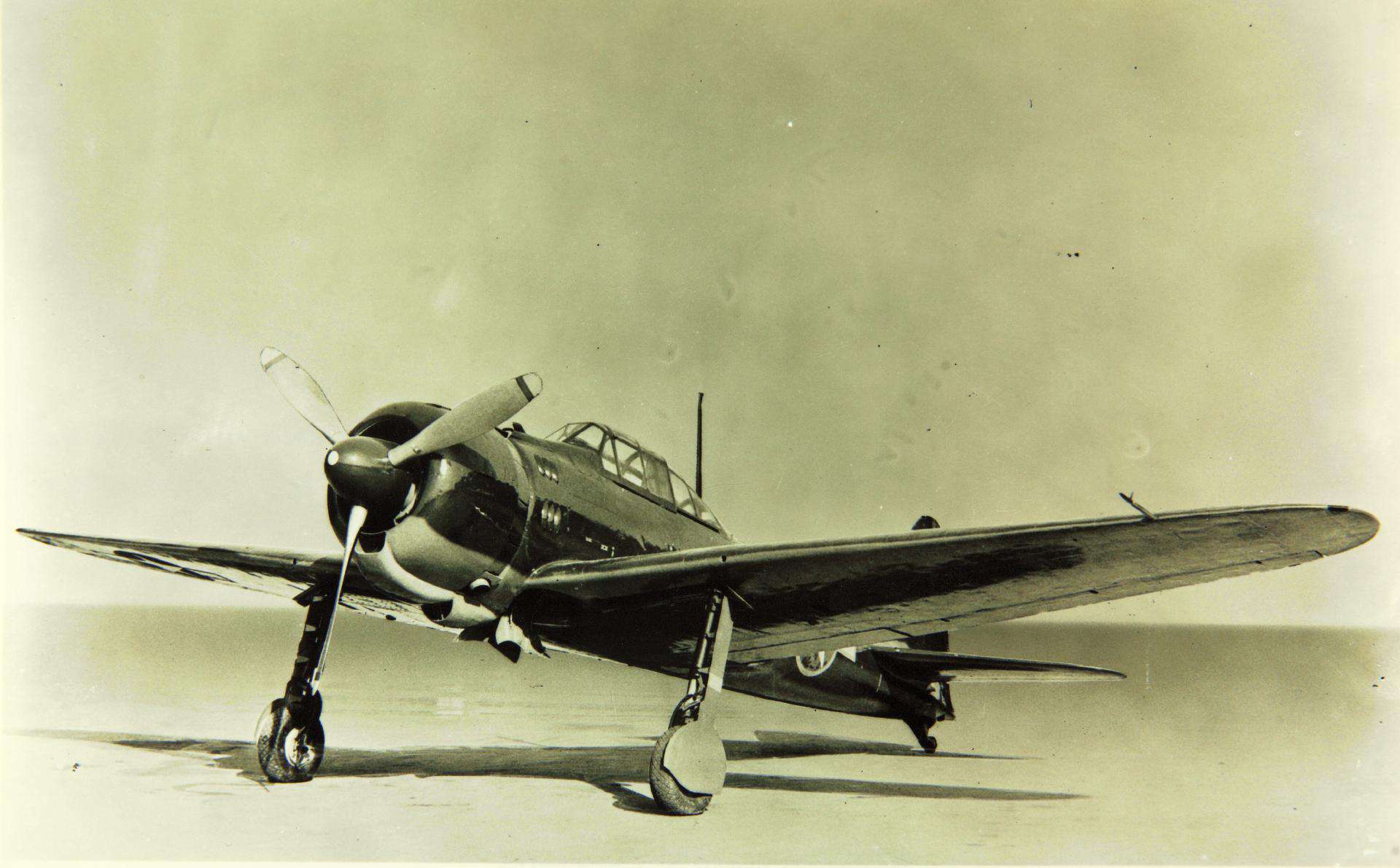
In Sunburst: The Rise of the Japanese Naval Air Power, 1909–1941 by Mark R. Peatie, he describes the Mitsubishi A6M Zero as “dainty as a dragonfly and dangerous as a rapier.” The Zero, or “零式戦闘機” in Japanese (“Type 0 Fighter”), often shortened to “零闘” or “Rei-Sen”, was the most maneuverable aircraft in the skies during WWII. Designed by Jiro Horikoshi in 1937, the Zero’s primary goals were to make the aircraft as nimble as possible and give it enough operating range to escort bombers to long-distance targets, such as China, and back. Thus, the engineers worked tirelessly to make the Zero as lightweight as possible. “Nothing has been spared to keep weight down, neither excessive man-hours to manufacture complex units nor increasing maintenance difficulties for ground crews.”
A good example of the engineering that helped the Zero become such a deadly force in the sky is the brackets made of sheet aluminum and pierced with large lightning holes. The manufacturers rivet the pieces back together to support the aileron control lube. They could have made the subassembly easier by using fewer and larger metal pieces. However, it would have increased the plane’s overall weight. For pieces of the frame that had to be solid, they used extra super duralumin, an alloy developed by Sumimoto Metal in 1935.
The Zero was so deadly in the skies that many Allied pilots would refuse to engage them unless they had a clear altitude or speed advantage. When they did engage, Allied pilots would typically make a single pass on the Zero and attempt to “boom” it. If they failed to take the plane down on the first pass, they would flee and continue their mission instead of attempting to dogfight the plane.
Junkers Ju-88
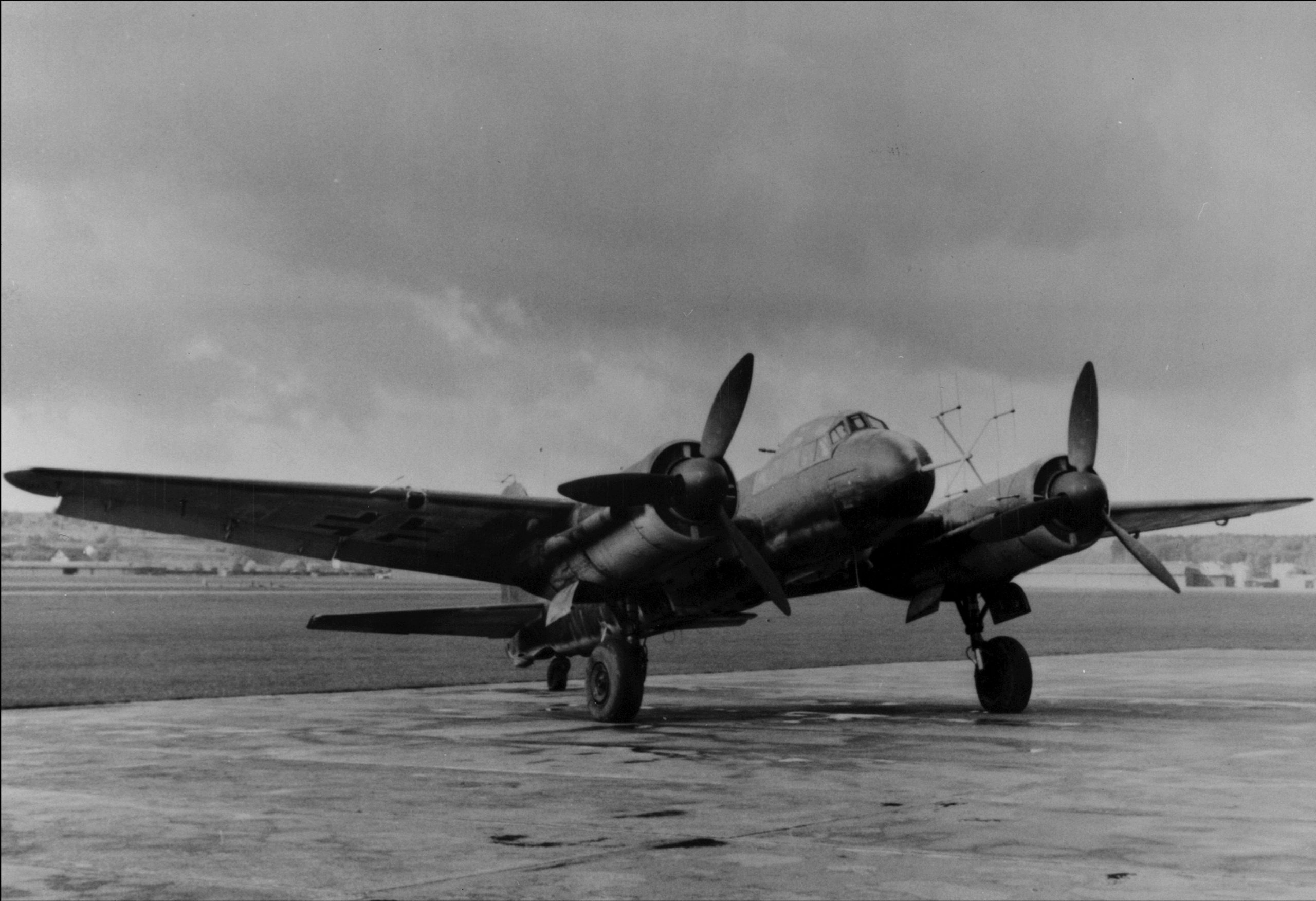
The Junkers Ju-88 was the most versatile aircraft of WWII, befitting of its long service—the longest of any WWII aircraft. It was also one of the few planes that was not considered obsolete at the end of the war. The design was intended to be the primary medium bomber of the Luftwaffe. It was eventually replaced by the more modern Ju-288. However, the Ju-288 never saw actual service due to many circumstances, such as production shortfalls. There were many variants of the Ju-88 produced by the German government, including the Ju-88S, intended to be the fastest bomber variant of the aircraft.
Originally the Ju-88 was designed because the Luftwaffe needed a bomber fleet. Bomber planes were significantly more important in WWII than in previous wars, where aviation didn’t play a massively significant role. The government issued requests for high-speed airliners and mail delivery aircraft that could double as light and medium bombers. By the end of 1935, the Heinkel He 111, Dornier Do 17, and Junkers Ju 88 were designed and submitted to the government. At the end of 1940, it was clear that the German army needed a second generation of bombers to phase out the original three.
The Ju 88A didn’t see widespread military usage until 1940. Its superior speed and dive attack capabilities made it immediately useful in the landscape of the war. However, the Ju 88 had poor defensive armaments and a limited field of fire. These flaws became very apparent during the invasion of Belgium and France. The Ju 88 was also present at the Battle of Britain. However, while bomber losses were high throughout the entire Luftwaffe, Ju 88 units had specific trouble maintaining the serviceability of their planes.
Messerschmitt Bf 109
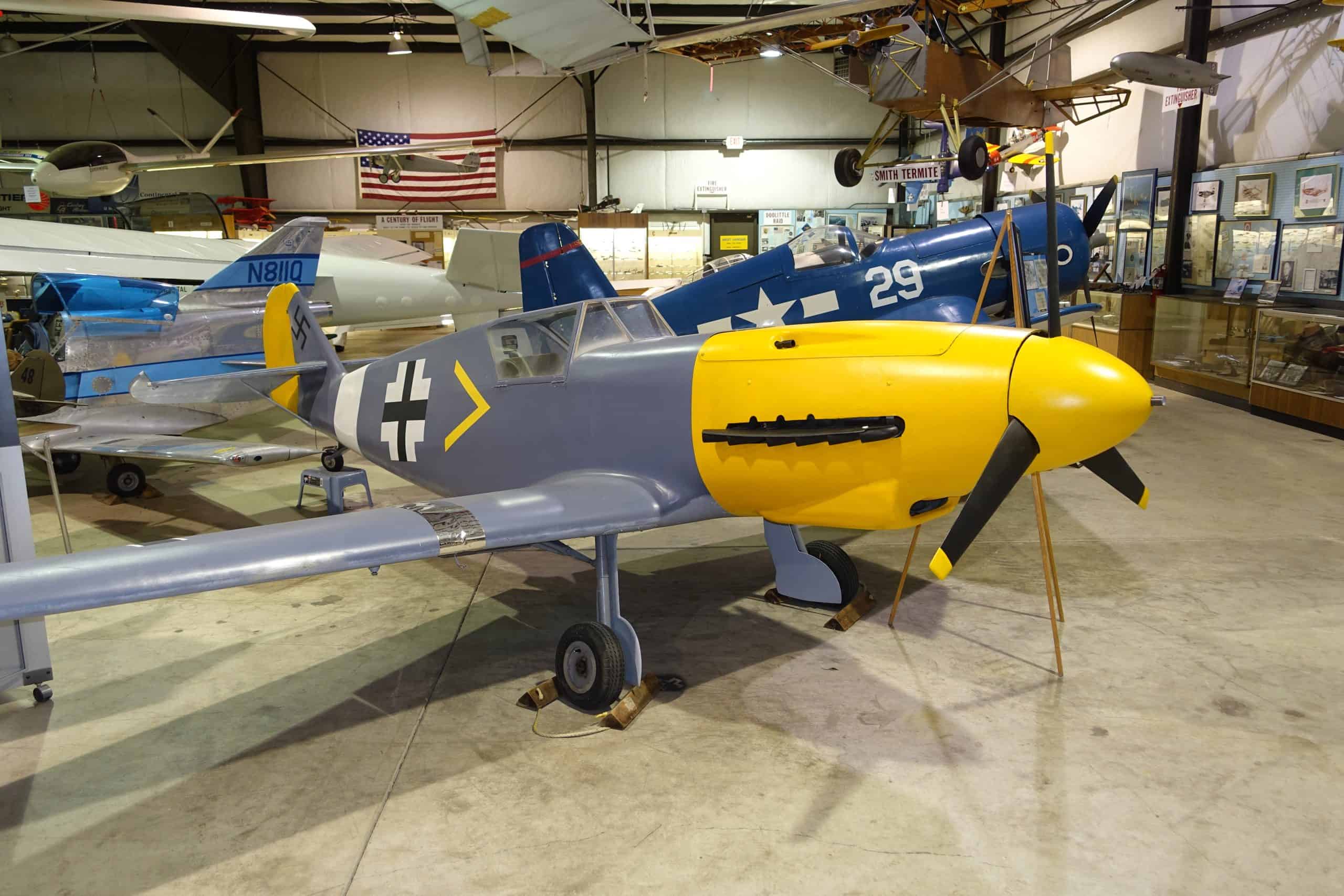
The Messerschmitt Bf 109 was Nazi Germany’s most important fighter aircraft. It’s typically referred to as the Me 109, after its designer, Willy Messerschmitt. The plane was designed by the Bavarian Airplane Company in response to a Luftwaffe specification for a high-performance single-seat fighter in 1934. The design is essentially the smallest possible airframe that can be wrapped around the most powerful in-line aero engine available while still carrying useful armaments. It’s a small, angular low-wing monoplane with a closely set main landing gear that retracted outward into the wings.
At the time, the only engine available to the designers was the Junkers Jumo with just 210 horsepower. However, even the Jumo wasn’t available when they flew their first prototype. So, the first test flight of the Messerschmitt Bf 109 went out with a British Rolls-Royce engine. The Jumo-powered Bf 109B entered military service in 1937 armed with four 7.92-mm (0.3-inch) machine guns. The plane was immediately used during the Spanish Civil War. The Bf 109 successfully fought against Soviet I-16 and I-15 monoplanes and biplanes. Their success in dogfighting was partially due to the Luftwaffe pioneering the use of interplane radio-to-control formations in air-to-air combat.
The Bf 109 was the primary German fighter plane from the invasion of Poland up through the Battle of Britain. It was superior to anything the Allied Forces had below 15,000 feet. However, once the plane climbed above 15,000 feet, it was outperformed by the British Spitfire. It had a top speed of 350 miles per hour (570 kmph). While it had an altitude ceiling of 36,000 feet, it performed better below 15,000 feet.
Supermarine Spitfire
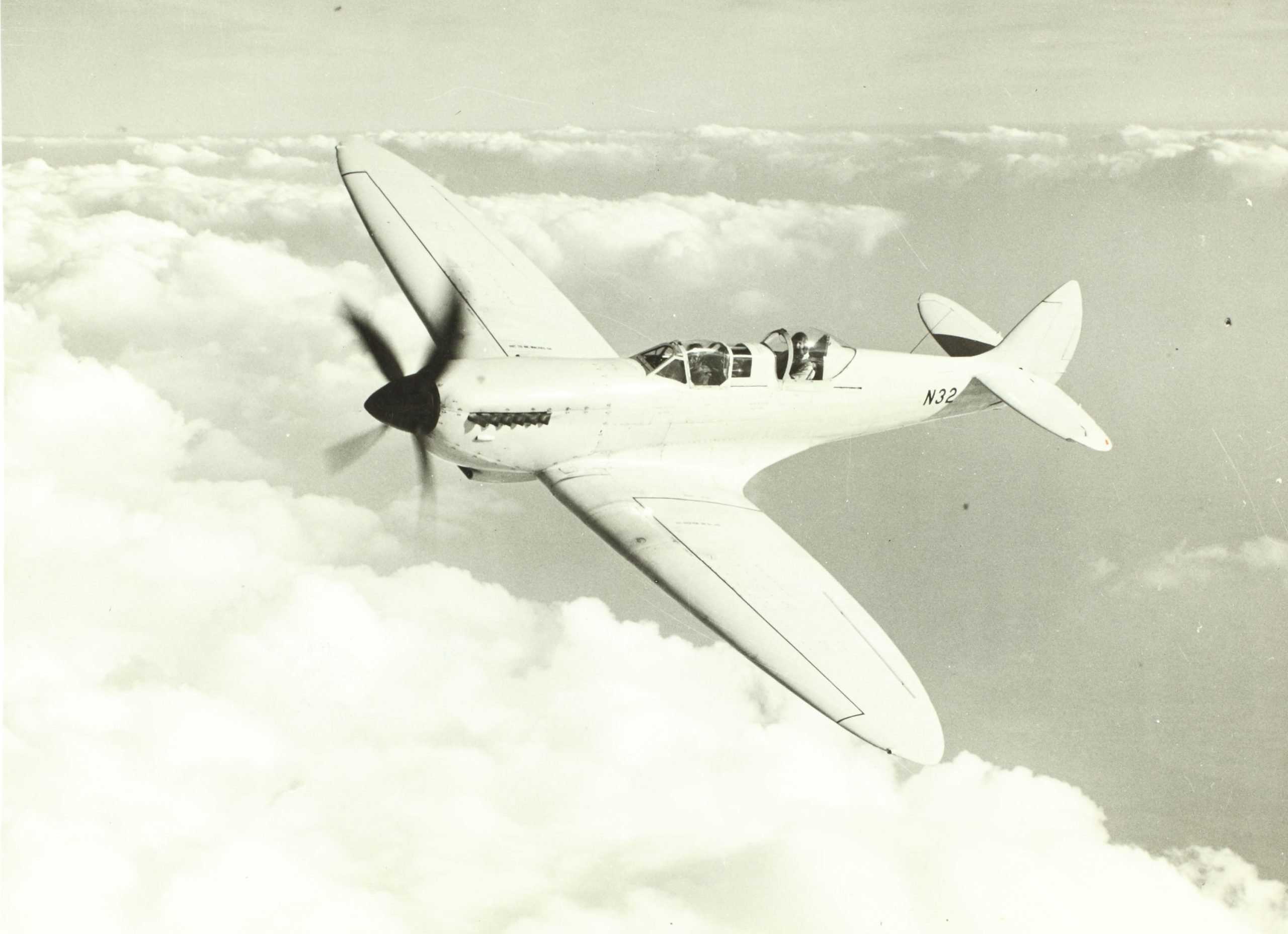
Designed by Supermarine, the British Spifire was the most widely-produced and strategically important British single-seat fighter of World War II. It has some impressive accolades, such as winning the Battle of Britain alongside the Hawker Hurricane. Spitfires served in every theatre of the war during WWII. The British produced more Spitfire variants than any other British aircraft. The plane was designed by Reginald Mitchell of Supermarine Ltd. in response to an Air Ministry specification for a high-performance fighter with an armament of eight wing-mounted 7.7-mm (0.303-inch) machine guns in 1934. Mitchell had designed a series of floatplanes to compete for the Schneider Trophy in the 1920s. He based the Spitfire on some of these designs. One of those designs, the S.6, set a world record by flying 357 miles per hour (574 kmph) in 1929.
The Spitfire used a 1,000 horsepower, 12-cylinder, liquid-cooled Rolls-Royce PV-12 engine, also known as the Merlin engine. Its first test flight was in March 1935. Finally, the plane was delivered to RAF squadrons in the summer of 1938. The plane used a stressed-skin aluminum structure with elliptical wings with a thin airfoil to give it exceptional performance at high altitudes when combined with the Merlin’s ultra-efficient two-stage supercharger. It was faster than the Bf 109 at high altitudes and retained a similar maneuverability. Thus, it was excellent for dogfighting the Bf 109.
Spitfires were the plane of choice to engage German fighter planes in dogfights. Conversely, the slightly slower Hurricane would target the bomber planes the fighters were escorting. Hurricane pilots are credited with more “kills” in the Battle of Britain. However, experts consider the Spitfire’s exceptional high-altitude performance as the factor that gave the Royal Air Force the margin of victory it needed to succeed.
Avro Lancaster

The Avro Lancaster was the most successful British heavy bomber of WWII. The plane was designed by A.V. Roe & Company Ltd. in response to a Royal Air Force specification calling for a bomber powered by two 24-cylinder Rolls-Royce Vulture engines in 1936. The initial design for the specification was the Manchester, which saw its first flight in 1939. The Manchester was committed to service in 1941. However, the Vulture engine was a massive failure. Thus, the Manchester was only produced in small numbers before it was decommissioned. The design was then revamped using a Rolls-Royce Merlin engine, resulting in the Avro Lancaster.
The Lancaster’s first prototype flight was in January 1941 and full-scale production began in 1942. Lancaster planes entered combat in April 1942 with a mid-wing and twin-tail design, powered by four 1,460 horsepower Merlins. It had a full wingspan of 120 feet and was 69 feet long. The plane required a basic crew of seven members: the pilot, copilot, bombardier, navigator, radioman, and gunners. The Lancaster could fly up to 280 miles per hour (450 kmph) and had an altitude ceiling of 24,500 feet. It could carry up to 14,000 pounds (6,350 kg) of bombs to a range of 1,660 miles (2,670 km).
A version of the Lancaster using a Bristol Hercules engine was also produced due to a shortage of Merlin engines. However, the air-cooled Hercules was less capable than the Merlin. So, Merlin-powered Lancasters were favored. Almost all of the 7,377 Lancasters produced were committed to the nighttime strategic bombing of German cities.
Boeing B-17 Flying Fortress
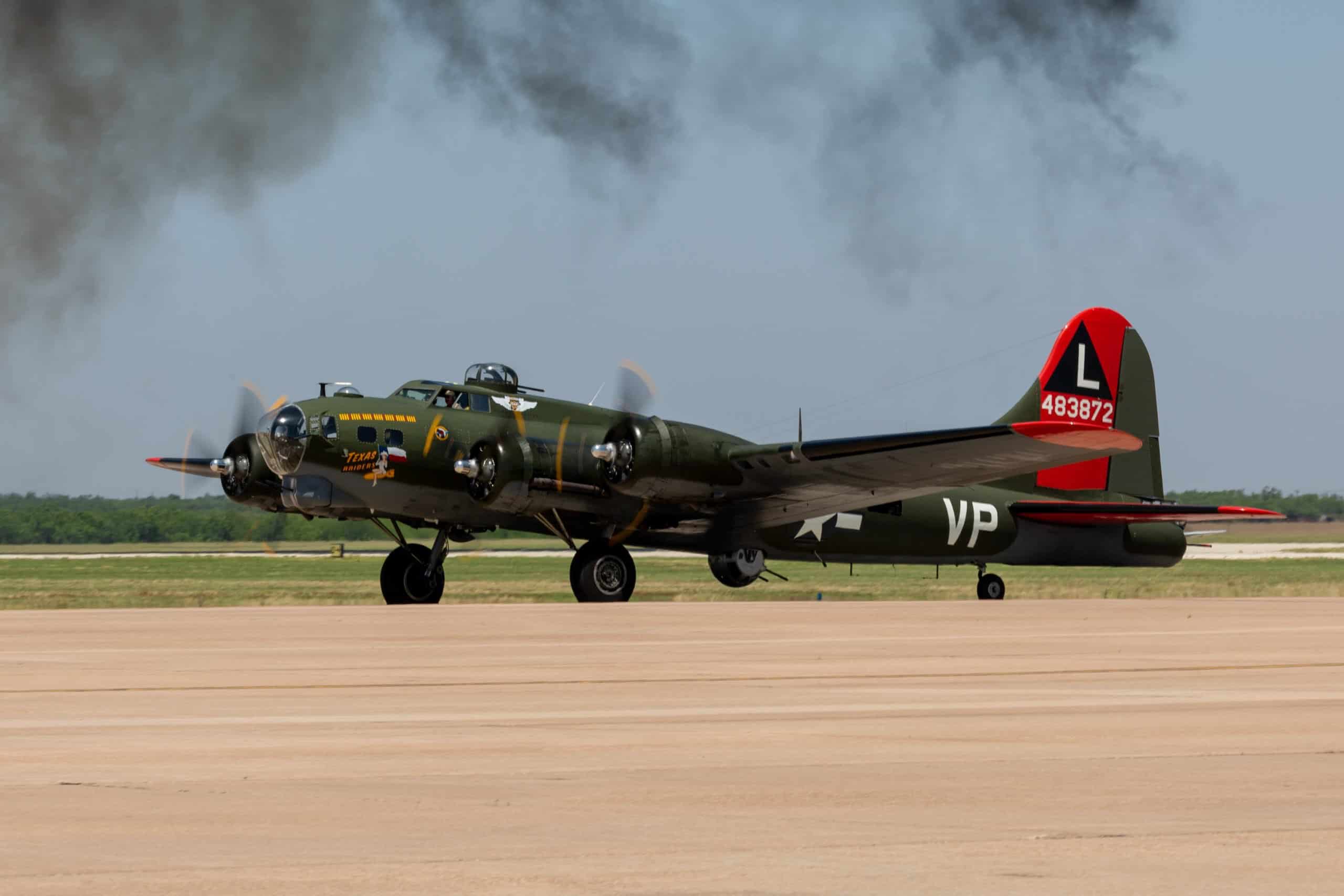
While less prolific than the Lancaster, the Boeing B-17 Flying Fortress remains one of the most prolific WWII aircraft of all time. It was designed by the Boeing Aircraft Company in response to an Army Air Corps specification calling for a four-engined bomber in 1934. At the time, two engines were standard for bomber planes. The Flying Fortress was designed to attack strategic targets by daylight bombing and penetrate deep into enemy territory by flying above the effective range of anti-aircraft artillery. The plane used Turbo-supercharged engines to give it the exceptional high-altitude performance necessary to fly above the range of anti-aircraft artillery without trouble.
It was also equipped with heavy defensive armament to protect it against enemy fighter aircraft that might try and shoot it down on its way to its targets. Using the secretly developed Norden bombsight, the Flying Fortress could deliver bomb loads with exceptional accuracy. The Norden bombsight used a gyroscopically stabilized telescopic sight coupled to an electromechanical computer into which the bombardier fed inputs for altitude, atmospheric conditions, airspeed, ground speed, and drift. During bomb runs, the sight was slaved to the automatic pilot to guide the aircraft to its precise release point. When used by a skilled bombardier, the Norden bombsight had few comparable matches.
Early versions of the Flying Fortress were deemed too vulnerable to attacking planes. Thus, by the time the B-17E entered frontline service, it was equipped with turrets in the upper fuselage, belly, and tail. All turrets but the ones on the tail were power-operated and mounted a pair of 0.50 caliber (12.7-mm) machine guns.
Boeing B-29 Superfortress
A B-29 Superfortress, B-17 Flying Fortress and B-52 Stratofortress fly in formation at the 2017 Barksdale Air Force Base Airshow, May 6. Held for the first time in 1933, the Barksdale Air Force Base Air Show is a full weekend event showcasing displays of latest as well as historical military and civilian aircraft. (U.S. Air Force photo/Senior Airman Curt Beach)The Boeing B-29 Superfortress was another WWII plane, an American heavy bomber. Another plane designed by the Boeing Aircraft Company, is perhaps the most well-known American plane, even if not by name, as it was B-29 Superfortress planes that flew the missions to drop atomic bombs on Hiroshima and Nagasaki, Japan. The plane was designed in response to specifications released by the Army Air Corps that were later modified to provide the final aircraft with heavier armament and a better bomb load. The first test flight of a B-29 prototype was in September 1942 and within two years, the plane was operating primarily in the Pacific theatre with as many as 500 in service.
The Superfortress was armed with ten 0.50 caliber machine guns and one 20-mm cannon. Four of the gun turrets could be operated by remote control from any of the plane’s five sighting stations. It had a total bomb capacity of 10 tons. The necessary size of the plane’s crew varied from 10 to 14 people. The modified B-29s, Enola Gay and Brockscar flew the missions to drop the atomic bombs on Japan at the end of World War II. Production of the B-29 Superfortress ended in 1946. By that point, 3,970 B-29s had been built. Many of the planes were converted to tankers to perform in-flight refueling for other aircraft.
